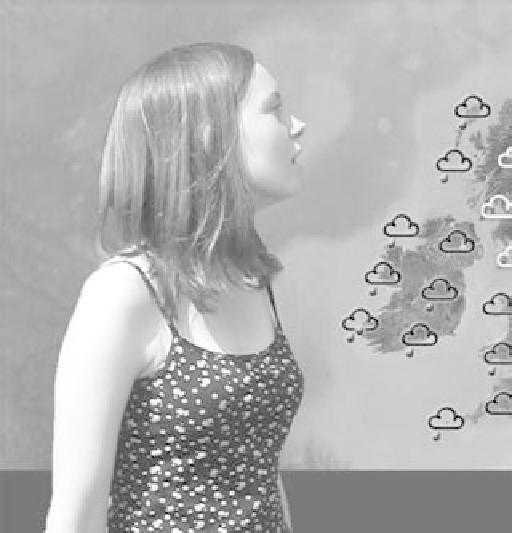Image Processing Reference
In-Depth Information
Figure 12-2
Fully composited image broadcast as a single stream.
Separating the moving presenter and the static background is the first thing. This
already happens when the presenter is filmed against a blue background. A matte or alpha-
channel mask is easily created from that video. Degenerating the image into macroblocks
provides a lot of help with this process. Take the example presenter in Figure 12-3. Note the
macroblock subdivision grid superimposed on the image.
All the cells in the image are classified. Each macroblock is wholly inside, wholly
outside, or partially within the alpha-channel masked area. This is determined by whether
the edge passes through the macroblock. The two simple cases where the block is not
intersected by an edge are eliminated trivially. The blocks that are completely inside must
be coded, and those that are outside are ignored.
Blocks that are partially masked require the edge shape of be coded as an additional
macroblock. The alpha-channel macroblock is coded quite efficiently, especially if the
mask has no soft edges and is represented as a 1-bit value. Soft anti-aliased edges require
an 8-bit value.
Comparing this with the MPEG-1 and MPEG-2 coding of macroblocks, an additional
layer must be coded to carry the alpha channel if shape coding is used. In the decoder, the
shape channel controls the blending of the decoded video as an overlay on the background
layer to create a composited image.


Search WWH ::

Custom Search